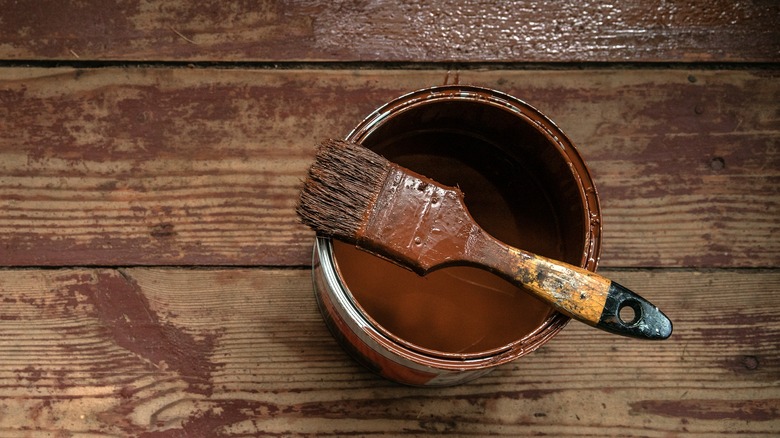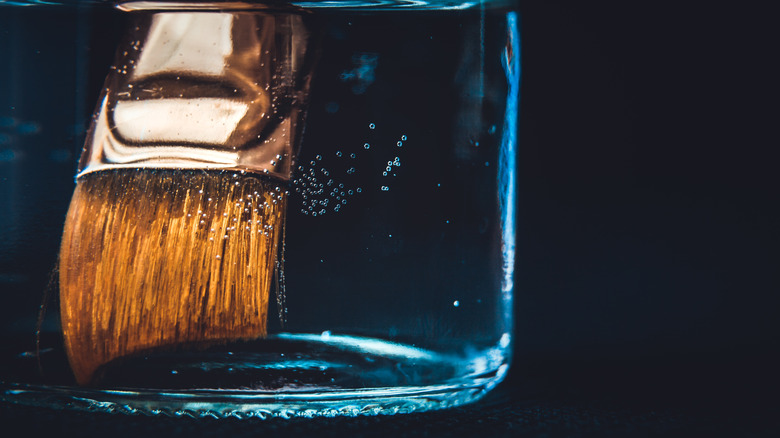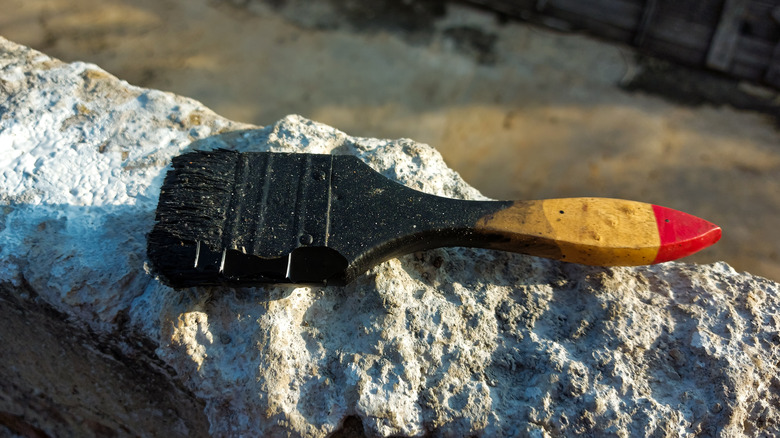Bring Your Hard Paintbrush Back To Life With One Unexpected Kitchen Staple
It's a bit of a buzzkill when you're starting a painting project and all that you have to work with are paintbrushes that are a little worse for wear. If your paintbrushes are on the crusty side, then look no further than your good friend vinegar. This kitchen staple is considered to be a universal solvent and, because of its acidic nature, it also excels in the world of cleaning up your DIY projects.
Unfortunately, when it comes to cleaning brushes, you're going to be in trouble if you don't do it immediately after you're done using them. It's essential to clean your brushes after each use, regardless of the type of paint being used. Failing to properly clean your equipment can create challenges for your future projects. When paint dries on the bristles, it causes them to stiffen, which compromises the brush and shortens its lifespan. In some cases, the brush may become unusable and need to be replaced altogether. And good quality paintbrushes do not run cheap.
A word of caution about vinegar and cleaning your brushes. This particular cleaning hack only works for water-based paints. It won't work with oil-based paints, which will require paint thinner or mineral spirits to dissolve the pain from your brush.
Vinegar is magic
Getting rid of dried paint from brushes can pose a challenge, but it's worth the time and effort because brushes aren't cheap. This method of cleaning paintbrushes with vinegar can also be used if you forget to wash your brush after painting. Heat some white distilled vinegar in a saucepan or microwave until it gets hot. Pour the hot vinegar into a heat-proof container and place the brush in it, allowing it to soak for at least 20 minutes.
It's recommended that you keep your brushes suspended in an upright position, and that there should be enough vinegar in your container to cover the bristles. After the soaking is complete, wash the brushes in warm soapy water. It's recommended that you use your fingers or a scrubber brush to remove the old paint. Rinse your brush thoroughly and either hang it or let it dry on a flat surface.
To store your brush during a short break, leave the bottom one-third of the bristles in the paint to prevent it from drying out. For a longer break, wrap the entire head of the brush in plastic wrap or a plastic bag and seal it with masking tape. Store it in a cool area or put it in a ziplock bag in the freezer for up to two days.
If vinegar isn't doing the trick ...
If your brushes are still on the gunky side, repeat the vinegar rinse a couple more times. Make sure you're allowing it to sit a bit longer to make sure the vinegar is really able to get into the paint. On the off chance that this potent liquid doesn't provide enough of a thorough cleaning, you can try to use a brush comb or wire brush to gently remove any of the residual paint from the bristles. Keep in mind that you have to practice caution with the detangling process because the bristles are quite delicate and easy to pull out ... and you can't do much with a brush that's got chunks of hair missing from it.
The worst-case scenario is as to be expected. If your poor brush has gone through the vinegar bath more than two or three times, it's best to cut your losses and toss it. Repeated exposure to the acidic nature of vinegar can actually cause more damage and actually shorten your beloved paintbrush's lifespan. Of course, it's money down the drain. But it's also a good reminder to always rinse your brushes after use.


